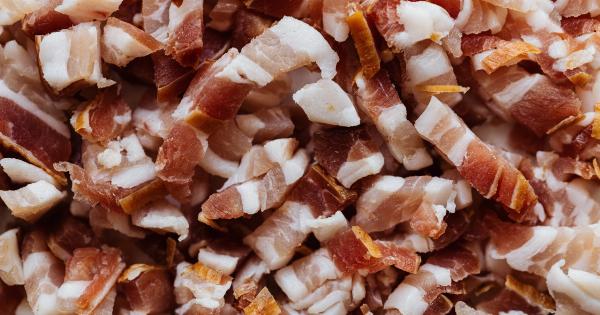In recent years, there has been a growing trend towards adopting a more flexible approach to eating, with many individuals choosing to follow a flexitarian diet.
The term “flexitarian” is a combination of the words “flexible” and “vegetarian,” and it refers to individuals who predominantly follow a plant-based diet but occasionally consume meat or fish. This dietary choice allows for flexibility and can accommodate personal preferences, ethical considerations, and health requirements.
However, it can be challenging to strike a balance between the desire to reduce meat consumption and the occasional craving for animal-based protein sources. In this article, we explore the concept of being a flexitarian and examine how meat can be incorporated into a flexitarian diet without compromising its core principles.
The Flexitarian Philosophy
Flexitarianism is not a strict dietary regime but rather a flexible lifestyle choice that encourages individuals to consume predominantly plant-based foods while still leaving space for occasional meat consumption.
The flexitarian philosophy centers around the idea of reducing the intake of animal-based products to protect animal welfare, promote sustainability, and improve personal health.
At its core, flexitarianism promotes a shift towards a plant-based diet by increasing vegetable, fruit, whole grain, legume, and plant-based protein consumption.
The aim is to ensure that plant-based foods form the foundation of each meal, with meat and other animal products serving as complementary additions rather than the primary focus.
The Benefits of a Flexitarian Diet
Adopting a flexitarian diet can have numerous benefits for both individuals and the planet. Let’s take a closer look:.
1. Health Benefits
A flexitarian diet provides an opportunity to increase the intake of essential nutrients, vitamins, minerals, and dietary fiber present in plant-based foods.
This can have a positive impact on overall health, helping to reduce the risk of chronic illnesses such as heart disease, high blood pressure, and certain types of cancer.
2. Environmental Sustainability
By reducing the consumption of animal-based products, flexitarians contribute to reducing greenhouse gas emissions, promoting sustainable land use, and conserving water resources.
Animal agriculture is a significant contributor to environmental issues such as deforestation, water pollution, and greenhouse gas emissions. By choosing to consume less meat, flexitarians support a more sustainable food system.
3. Ethical Considerations
One of the primary motivations for adopting a flexitarian lifestyle is the ethical concern for animal welfare.
By reducing meat consumption, flexitarians can promote animal welfare by supporting the demand for humanely raised animal products and reducing the overall demand for factory-farmed meat.
4. Variety and Culinary Exploration
A flexitarian diet encourages individuals to explore a wide range of plant-based ingredients, spices, and cooking techniques.
This can lead to a more diverse and exciting culinary experience, opening up a world of flavors and dishes that are centered around vegetables, fruits, legumes, and whole grains.
Incorporating Meat into a Flexitarian Diet
While the flexitarian diet predominantly focuses on plant-based foods, occasional consumption of meat or fish is not off-limits.
It’s crucial for flexitarians to find a balance that aligns with their individual preferences, health needs, and sustainability goals. Here are a few strategies to consider:.
1. Opt for Quality Over Quantity
When choosing to consume meat, opt for high-quality, ethically sourced products. Look for labels such as organic, grass-fed, or free-range to support a more sustainable and humane animal agriculture industry.
By selecting meat that has been produced using environmentally friendly and ethical practices, flexitarians can make a positive impact with their choices.
2. Reduce Portion Sizes
In a flexitarian diet, meat is not the main focus of the meal but rather a smaller component. Reduce the portion sizes of meat and instead increase the presence of plant-based elements on the plate.
This can help strike a balance between getting the desired flavors and nutrients from animal-based products while emphasizing the importance of plant-based foods in overall nutrition.
3. Choose Lean and White Meats
When consuming meat, opt for lean and white meats such as poultry and fish. These choices tend to be lower in saturated fats and generally have a lower environmental impact compared to red meats.
Incorporating these leaner options into the diet can provide the desired protein content while still aligning with the flexitarian principles.
4. Explore Plant-Based Alternatives
Experimenting with plant-based alternatives can be an excellent way to reduce meat consumption without sacrificing taste or texture.
With the rise of innovative food technologies, there is a wide range of plant-based meat substitutes available in the market. These alternatives often mimic the texture and taste of meat, making them a viable option for flexitarians who want to reduce their reliance on animal-based products.
Conclusion
Being a flexitarian allows individuals to strike a balance between reducing meat consumption and still having the flexibility to occasionally enjoy animal-based protein sources.
This dietary approach offers numerous health benefits, contributes to environmental sustainability, addresses ethical concerns, and encourages culinary exploration. Incorporating meat into a flexitarian diet can be done by focusing on quality, portion sizes, and leaner options, while also exploring plant-based alternatives.
By finding this balance, individuals can embrace a flexitarian lifestyle that aligns with their values and personal goals while still savoring the occasional meat-based indulgence.




























